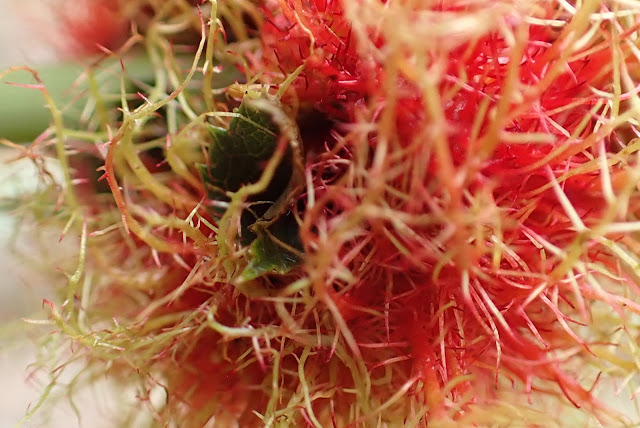Rose Bedeguar Gall
I found this in September, just before the hedge was cut back 🙄
There are quite a few of these moss-like balls growing on the roses in the hedge. I’ve often seen these galls and known they were associated with wasps but here are some things I didn’t know about them and the little wasp that causes it.
The gall grows when the small black wasp (Diplolepis rosae) lays up to 60 eggs into an unopened leaf or bud. This 'irritation' to the plant causes an abnormality in the plant cells in order to provide a Winter home and food for the developing larvae - each having its own separate chamber in the gall. As the larva eats the transformed host plant cells, it stimulates the plant to produce more enhanced nutritional cells. Isn't nature crazy?!
Could the photo below be showing the female at the bottom of the image? Possibly, or maybe it’s a predator or another type of gall wasp taking advantage of the pre-formed gall. It’s unlikely to be a male Diplolepis Rosae as the females are asexual and less than one percent of these wasps are male!
The name Bedeguar (bed-oo-gar) originates from a Persian word meaning “wind brought”. Moss gall, Brere gall, Robin Redbreast’s cushions and Robin’s Pincushion (named after the sprite Puck aka Robin Goodfellow) are alternative names which are, or have been, used for these hairy red encumbrances which are so prominent at this time of year.I’ll try to keep an eye on this one and will investigate it in Spring when the fuzzy outside should have gone, just leaving the hard core and I should be able to see if the wasps have emerged.
Next time you see one, think of all those little grubs growing up in there.These little wasps are specific to the wild rose so no problem at all to our allotment plants.








Comments
Post a Comment
Please leave a comment. I'm very pleased to receive corrections or confirmations of my identification of the creatures we've spotted on the allotment.